This article is the first of a series planned for Expedition to give our readers some knowledge of what other nations are doing in anthropology around the world. Studies in archaeology, ethnology, and human paleontology are now proceeding at an unprecedented rate in many regions, many of which were little known prior to the last war. We hope that these articles will give the reader a general idea of the significance of such research and also some understanding of the great questions in the study of man still to be answered by the anthropologist.
In the study of archaeology and ethnology, which are concerned with the characteristics and distribution, past and present, of the major groups of mankind, the science of physical anthropology must always make the basic contribution. At present there is a feeling in Britain that the traditional methods of this discipline are inadequate by themselves. In the field of human paleontology, for example, as Sir Wilfrid Le Gros Clark has lately made clear, the crucial evidence is too recent to fit to the geological time scale, but too early for dating by the method of Carbon-14 content. Consequently, new ways of estimating the age of skeletal remains are being devised. Of these, one which is being tried in the deposits associated with Australopithecine remains in Transvaal involves the microscopic inspection of sand particles at various levels, to deduce the different climatic conditions under which they accumulated. But of more general application and importance are the various new means, largely developed at the British Museum (Natural History), for estimating the relative antiquity of bone, by fluorine analysis, by uranium estimation, and more recently by protein (nitrogen) assay. The Piltdown skull, the Kanam mandible, and remains from the Sharbauer site in Texas have been subjected to such techniques, and the Swanscombe skull is being investigated afresh with the aid of the right parietal bone found in 1955.
Further recent finds are a forelimb of Proconsul africanus, studied by Dr. J.R. Napier and Dr. P.R. Davis, and a skull of Australopithecine type from Tanganyika, just announced by Dr. L.S.B. Leakey. In the realm of theory, Sir Wilfrid Le Gros Clark’s plea for a simplification of nomenclature and an acknowledgement f established evolutionary principles has effected a healthy clarification.
Physical anthropology is now much concerned with the processes by which human races become distinguishable. Work at Oxford particularly has shown that many of the standard racial characteristics of the older anthropology, stature, head-form, and the like, are somehow correlated with environmental features. But the complicated genetic basis of these characters makes them too difficult for use at present in research into the problems of selection. Instead, most attention is being paid to factors in the blood, whose inheritance is more simple to understand. The main questions under debate are: what are the selective advantages of the various blood-groups and abnormal haemoglobins? how permanent are the blood characteristics in a population? and how do demographic conditions influence the rate of selection or genetic drift?
It is now almost certain that every inheritable character of the blood is connected with liability to some disease; though it is not yet known in every case what this disease is, or even whether the relation is causal or incidental. In Britain at any rate, the selection of blood factors seems to operate very slowly, in which case their distribution must be relatively stable. Some have been so bold as to correlate the regional differences in blood-group frequencies, revealed by the National Blood Transfusion Service, with past ethnic movements–the higher percentage of group A in Eastern England, for example, with Anglo-Saxon colonisation. But in general there is caution in drawing ethnological conclusions from blood data. The field work of Dr. D. F. Roberts in the Sudan and Northern Nigeria, combining the study of blood features with that of demographic conditions, has already demonstrated one profitable line of research, in which social anthropology could help. Meanwhile the haptoglobins are being studied as possible extra indices of racial distinction, and the British Museum (Natural History) has started serological work on ancient bone and mummified tissue.

The Blood Group Reference Laboratory of the Medical Research Council performs most testing, while the Nuffield Blood Group Centre is largely concerned with statistics. Working closely with the National Blood Transfusion Service, and also with researchers in other countries, it is coming to function as the world coordinating centre for all population studies relating to the blood groups and other genetically simple characters.
Archaeologists too are experimenting with new techniques of discovery, of dating, and of analysis. Following the use of the military mine-detector in tracing buried objects, the more sensitive proton magnetometer has been developed for similar purposes by the Research Laboratory for Archaeology and the History of Art at Oxford. This instrument has had success in tracing pottery kilns and the sunken pits of Iron Age encampments.
The same laboratory, the first issue of whose annual, Archaeometry, appeared in 1958, has experimented in dating objects by the orientation of their magnetic particles. This procedure is still experimental, but its reliability has been vindicated by work on sets of early Chinese pottery of known antiquity.
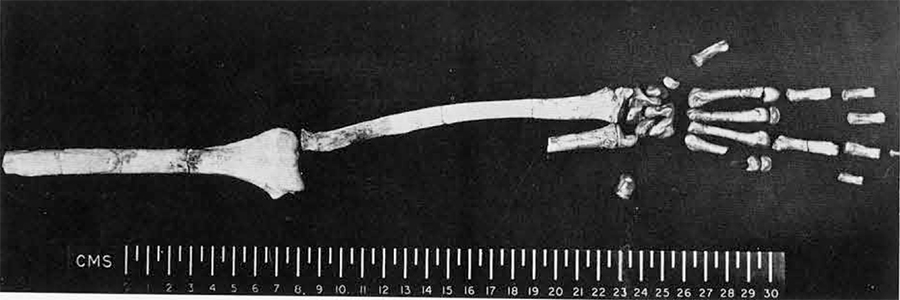
Dating by pollen analysis is a technique particularly appropriate to the raised bogs of Eire, where the Department of Irish Archaeology of Trinity College, Dublin, under Mr. G.F. Mitchell, which has recently excavated at Lough Gur and Dalkey Island, is particularly active in the important field of geochronology. In Ulster, the Nuffield Quarternary Research Unit has found conditions good not only for pollen analysis, but also for the study of fossil soils, and a scheme at Goodland, County Antrim, has succeeded in estimating the rate of soil and pan formation by the age of their archaeological contents. The Department of Environmental Archaeology in London has done much pioneer work in this field, and from here has come recently a manual of the subject, Dr. J.W. Cornwall’s Soils for the Archaeologist.
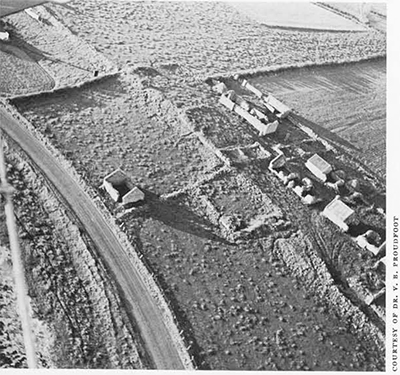
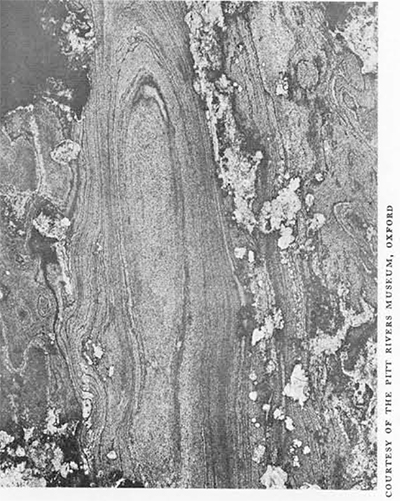
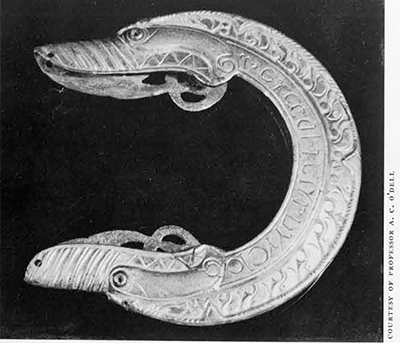
Spectroscopic analysis has been used in Britain for some time for identifying the raw material of stone axes, as has chemical analysis for determining the composition of early bronzes. But the inspection by radiography and microphotography of iron tools is a new departure. H.H. Coghlan’s Notes on Prehistoric and Early Iron in the Old World, published by the Pitt Rivers Museum at Oxford, describes experiments which have established the antiquity of the technique of producing a steel by piling and forge-welding thin laminations of carburized iron.
That technical ingenuity can still achieve much, even with the most familiar archaeological material, has been shown at Stonehenge. Professor R.J.C. Atkinson has discovered unsuspected carvings on some of the uprights by means of careful photography; a party of Boy Scouts has tested the mobility of facsimile megaliths; and Ministry of Works mechanics, under the direction of Professor Stuart Piggott, have re-erected some of the collapsed trilithons.
Modern British archaeology lays great store by the study of environment. Professor J.G.D. Clark of Cambridge has often stressed the need for this in prehistoric research; but its significance is more obvious and its pursuit more easy in the increasingly popular field of Dark Age and Mediaeval archaeology. Doubtless the wider publication of aerial photographs has helped here. J.S.P. Bradford, who has worked devotedly for the preservation and study of aerial documents, has recently written a manual about their use, Ancient Landscapes, while M.W. Beresford and J.F.S. St. Joseph have composed an aerial survey of Mediaeval England.
The Deserted Mediaeval Village Research Group, with largely amateur help, has resurrected significant fragments of forgotten English landscape; while in the Celtic West, old theories about traditional forms of land tenure are being drastically revised, notable through the work of Professor E. Estyn Evans of the Department of Geography at Belfast and his adjutants, Dr. V.B. Proudfoot and Dr. R.H. Buchanan. In particular, they have thrown new light on the architecture, the antiquity, and the economy of a type of rural settlement known as the clachan, an irregular cluster of farmsteads, occupied by tenants who were often blood relatives, and who tilled the land jointly. On the Sands of Forvie near Aberdeen, Mr. William Kirk, also a geographer, has demonstrated the close connection, over a period extending from late Neolithic to Mediaeval times, between a changing environment and changing patterns of settlement.
The Council for British Archaeology has since 1943 stimulated and guided the growing volume of largely amateur interest in this subject. In Jersey there have been stratified excavations on the Neolithic site of Le Pinacle, but field work is at present suspended at the famous Palaeolithic station of La Cotte de St. Brelade. Various promontory forts are being uncovered in the Isle of Man, and excavations continue at Roman stations such as Verulamium near St. Albans and Cirencester, and at later sites as widely separated as Glastonbury, Iona, and the Shetlands. In this last area, a party led by Professor A.C. O’Dell of Aberdeen has discovered a spectacular cache of Dark Age ornamental silverware on a sacred site on the Isle of St. Ninian.
The main current work of the British School of Archaeology at Rome, under Mr. J. Ward Perkins, is designed, like much of the most adventurous archaeological research in Britain, to combine excavation with environmental studies. It is concerned with the historical geography of Southern Etruria, and will take the form of a survey of the antiquities of all periods over an extensive area just north of Rome, and of a study, with the aid of pollen samples from crater lakes, of the nature of the primitive forest cover. From this will appear the successive patterns of settlement in the setting of the natural environment. The School at Rome is also cooperating in the publication of the great Severan buildings of Leptis Magna, and of the Christian antiquities of Cyrenaica.
The British School of Archaeology at Athens is currently at work, under its director, Mr. Sinclair Hood, around Knossos, where the main excavation, by the Royal Road, is providing a check on the stratigraphy of Arthur Evans. The cutting here goes down to Neolithic levels, which are being explored in the Palace area by Mr. John Evans. On the mainland, Lord William Taylour is doing exploratory trials in Laconia.
There will be no work this season at the major site of the British School of Archaeology in Jerusalem, Dr. K. Kenyon’s Jericho, nor at that of the British School in Iraq, Professor M.E.L. Mallowan’s Nimrud. Definitive reports of both excavations are being prepared. The British School of Archaeology at Ankara, directed by Mr. Seton Lloyd, is about to return to the clearance of the Middle Bronze Age palace at Beycesultan. In recent years, these three sites have provided monumental contributions to knowledge respectively of the earliest agricultural settlements of Palestine, of the art and economy of Assyria, and of the culture of Western Anatolia in the second millennium B.C.
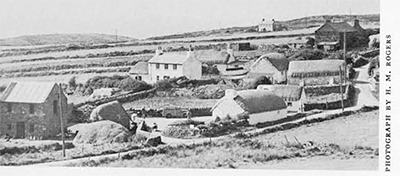
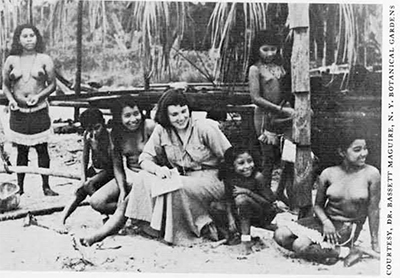
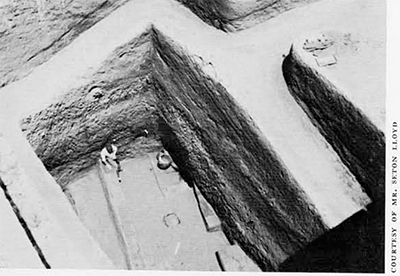
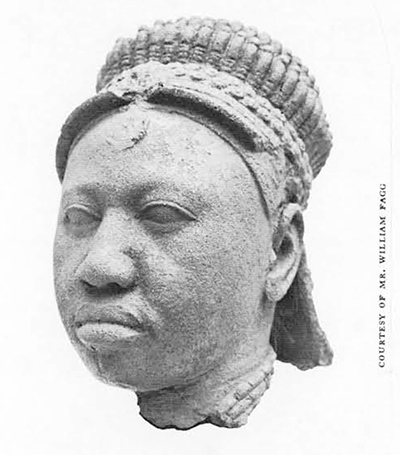
In addition to these major works there are a number of smaller British enterprises in the Near East. In Jordan, Mr. P.J. Parr has cleared Nabataean and Roman buildings at Petra, and nearby, Miss Diana Kirkbride has investigated a Mesolithic and Neolithic site; Dr. Dorothy Garrod has carried out Palaeolithic excavations in Lebanon; Mr. Alan Rowe is publishing his recent work on a Hellenistic necropolis in Cyrenaica; Professor John M. Cook and Mr. George E. Bean are carrying forward through explorations of early Greek sites on the Aegean shore of Asia Minor; Mr. J. Mellaart has made important surroundings in the chalcolithic mound at Hacilar in Southern Phrygia; Mr. and Mrs. Michael Gough are continuing their work on early Christian sites in Cilicia, and the Walker Trust’s expedition is restoring frescoes in the church of S. Sophia at Trebizond; Professor Storm Rice is clearing further the Omayyad mosque at Harran; Mr. Charles Burney is exploring in Eastern Turkey and Azerbaijan for more Urartian sites; Mr. David Oates has uncovered a Roman fort at Ain Sinu near Mosul; and Mr. T. Burton-Brown has carried out soundings with significant results in an early mound near Karaj in Northern Iran. Somewhat further afield, Professor F.E. Zeuner, after a study of the Stone Age in Northern Arabia has turned to an investigation of the early immigrations into the Canary Islands; while Sir Mortimer Wheeler has directed for the Pakistan Government the first stages in the new exploration of the great mound of Charsada near Peshawar, which was occupied through Achaemenid, Hellenistic, and Gandhara times.
By comparison with Western Asia, Africa south of the Sahara presents a much fresher field for archaeology. Here the frontier between prehistory and history is much more recent than in Eurasia, and experience in other continents can give little help with special problems of chronology and field technique. These difficulties were faced at the two conferences on History and Archaeology in Africa, held at the London School of Oriental and African Studies in 1953 and 1957.
In Nigeria, Mr. Frank Willett, working at Ife, has discovered important new terracottas and bronzes, and has added considerably to what little was known of the stratigraphic context of such objects; rock paintings have been discovered in the Kano-Bauchi area; and Mr. Bernard Fagg has described a widespread rock-gong complex. Besides the Nigerian Department of Antiquities, the Yoruba and Benin Historical Research Schemes are sponsoring much long-term work.
Professor P. Shinnie of the University College of Ghana is exploring the antiquities in the area of Lake Chad; and the early history of the coast of East Africa, one of the few zones where links can be made with other continents, is becoming clearer. The foundation of a British School of History and Archaeology in East Africa has been mooted.
Two notable cave explorations within the tropics are that of Mr. Adrian Dibby and Mr. A.H. Anderson at Las Cuevas in the interior of British Honduras, which has illuminated the late Maya decadence; and that of Mr. Tom Harrisson at Niah in Sarawak, where the stratification descends to the Middle Palaeolithic.
British ethnographic work, which a generation ago was often carried out by administrators, missionaries, and soldiers, is now almost entirely professional and under the control of the various university departments of social anthropology. Much or it, and especially that sponsored by the Colonial Office, is pursued in Africa; but there is a growing interest in Southeast Asia, in the Middle Ease, and in the West Indies. Less is done in South America, though Dr. Audrey Butt of the Pitt River Museum has carried out a notable study of the remote Akawaio of British Guiana.
It is common now for ethnographers to look to one aspect of the life of a community, its legal system for example, its religion, or its economy. While this concentration doubtless adds to the value of such studies for academic theory and for administrative guidance, future ethnologists who will turn to them for information may regret the opportunities missed for making wider records, especially of material culture. Even in Africa, there may not be much time left for studying traditional crafts in a live setting.
Britain, of course, has reached the stage where ethnologists and folk-lorists, recovering traces of a past only recently but very thoughtfully fossilized, have virtually no point of contact with the anthropologists, striving to keep pace with frantic social change.
The activities of both are expanding. The Manx Museum founded its open-air branch, the first in the British Isles, at the village of Cregneash in 1938, with the fresh idea of dispensing with formal labels and retaining equipment in its natural setting. The Welsh Folk Museum at St. Fagans Castle near Cardiff was begun in 1946, the Museum of English Rural Life was founded at Reading some five years ago, and the Ulster Folk Life Museum has just been opened in Belfast. The Manx Folk Life Survey, the School of Scottish Studies, the Irish Folk Lore Commission, the Committee on Ulster Folk Life and Traditions, the Folk Lore Society, and more local organizations like the Oxfordshire Folk Lore Society are all doing rescue work, largely with amateur help, especially from the schools.
The social anthropologists at work in Britain are turning progressively to work of a diagnostic nature, often in collaboration with other disciplines. Of this kind are the various investigations of the problems of coloured minorities, Miss S.R. Burstein’s studies of the social difficulties of old age in different settings, a Medical Research Council project under a medical specialist (K. Rawnsley) and a social anthropologist (J. Lowden) for investigating the epidemology of mental disorder in the Rhondda and the Vale of Glamorgan, an inquiry conducted by The Aberystwyth Department of Geography and Anthropology under Professor E.G. Bowen into the absorption of immigrant foresters into Welsh rural society, and a scheme based on Manchester for research in Leigh, a prosperous middle-class Lancashire town. the Department of Social Anthropology at Edinburgh, under Dr. K.L. Little, has lately done similar co-operative work in a mining town of Sierra Leone. Such undertakings, designed to help with the immediate problems, may prove to have a wider theoretical import, and will doubtless in course of time acquire interest as ethnological records.
